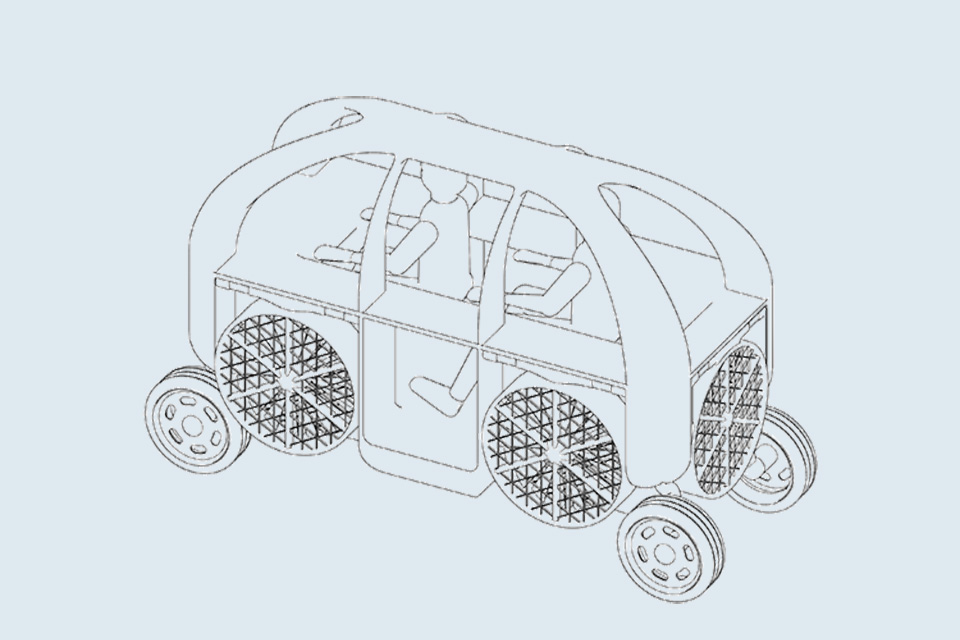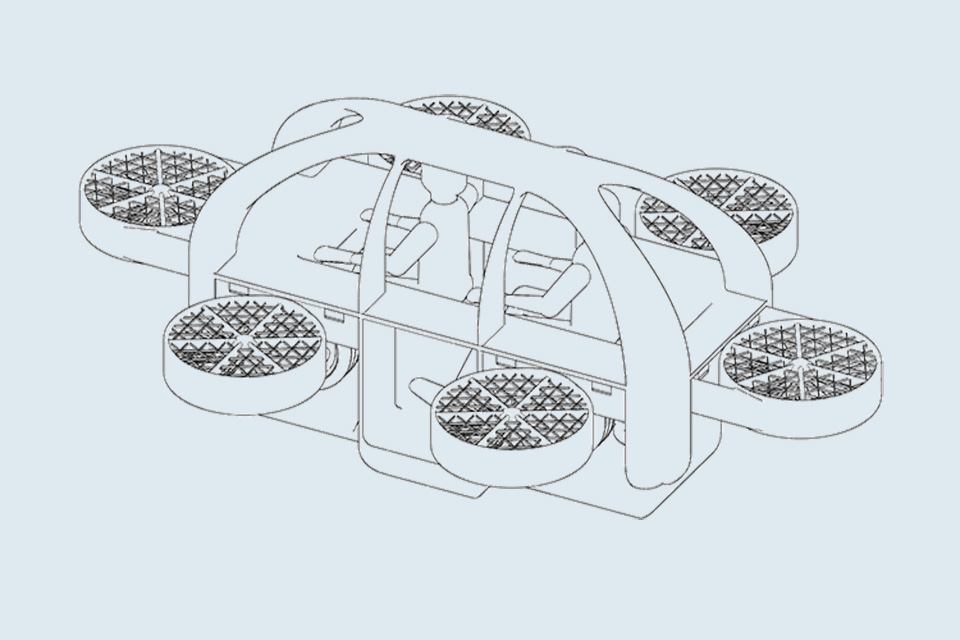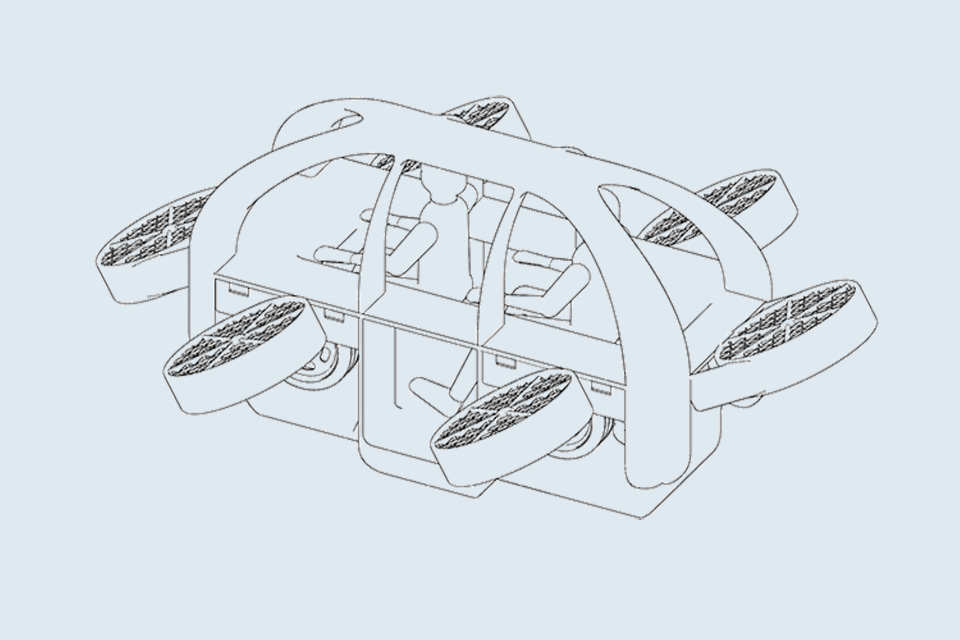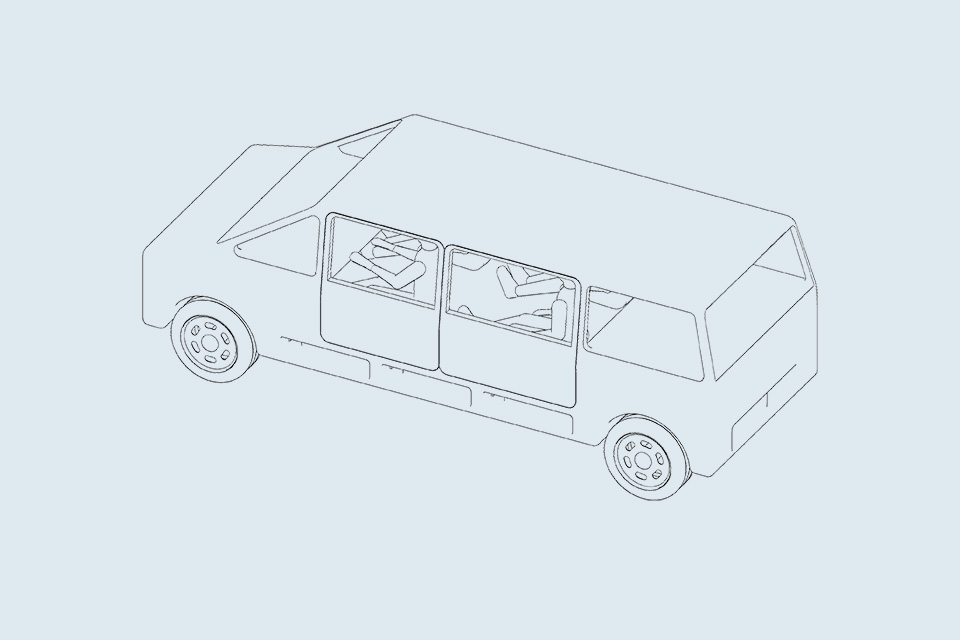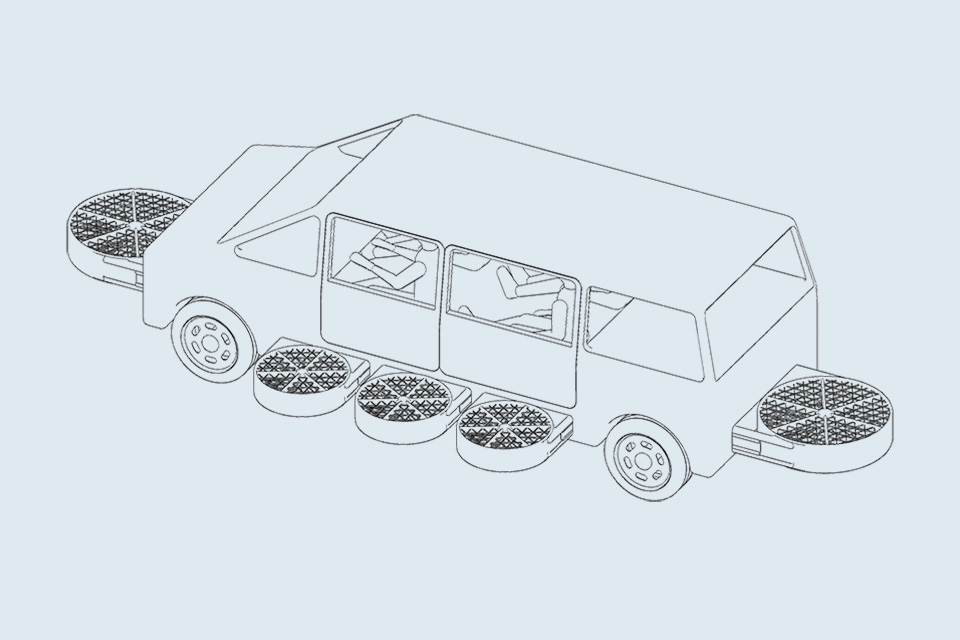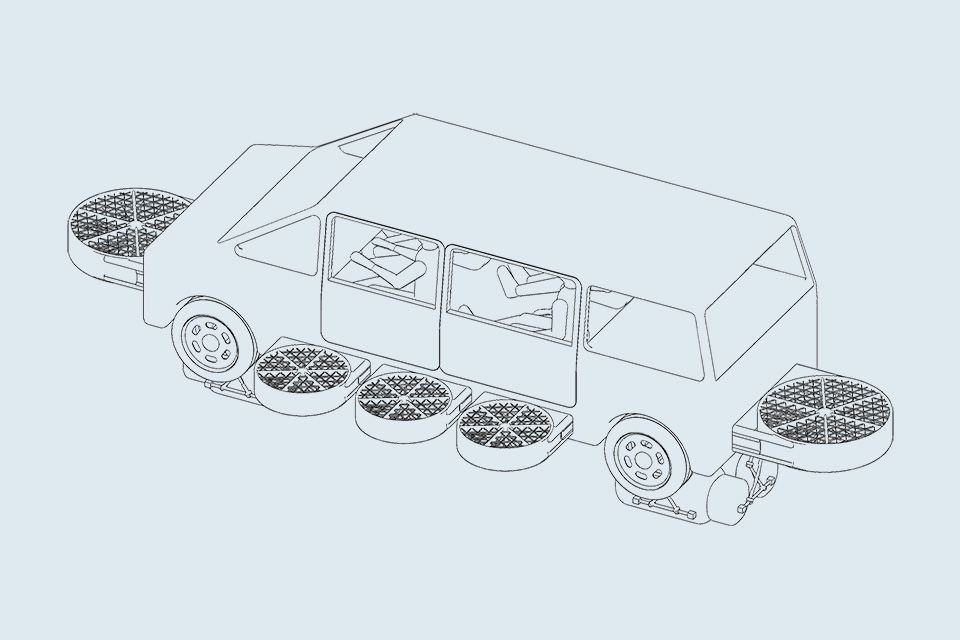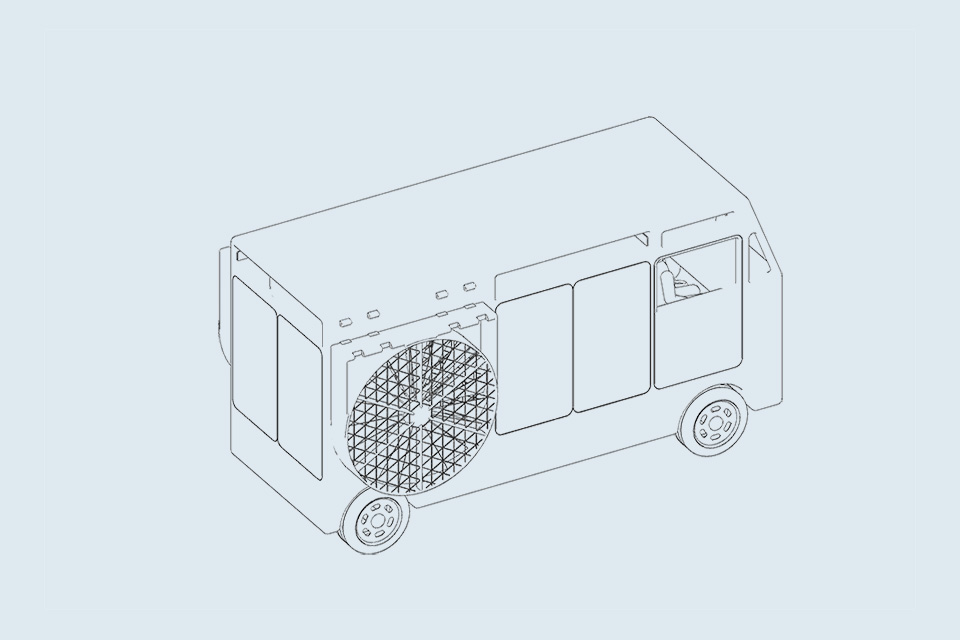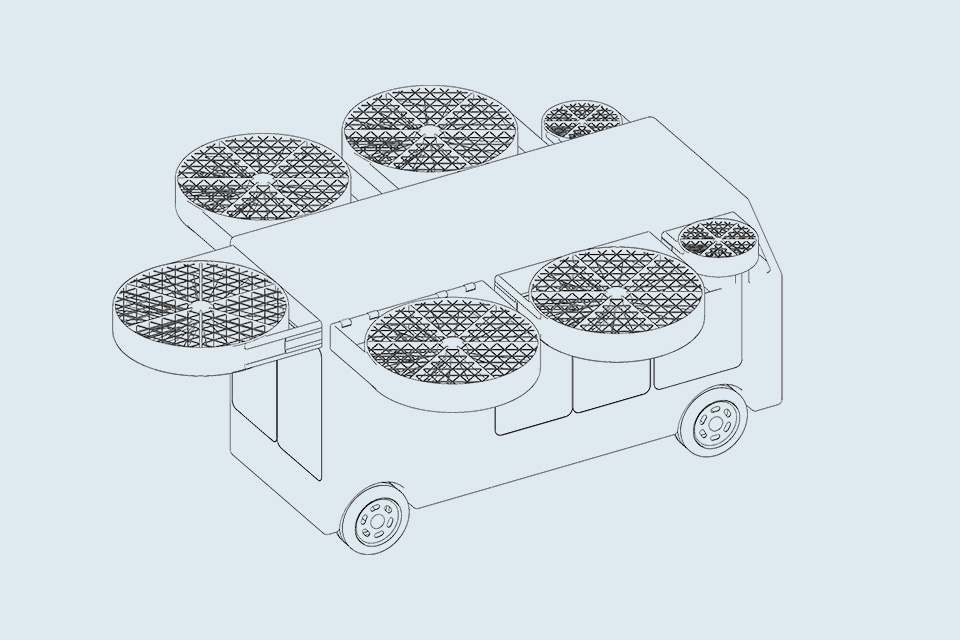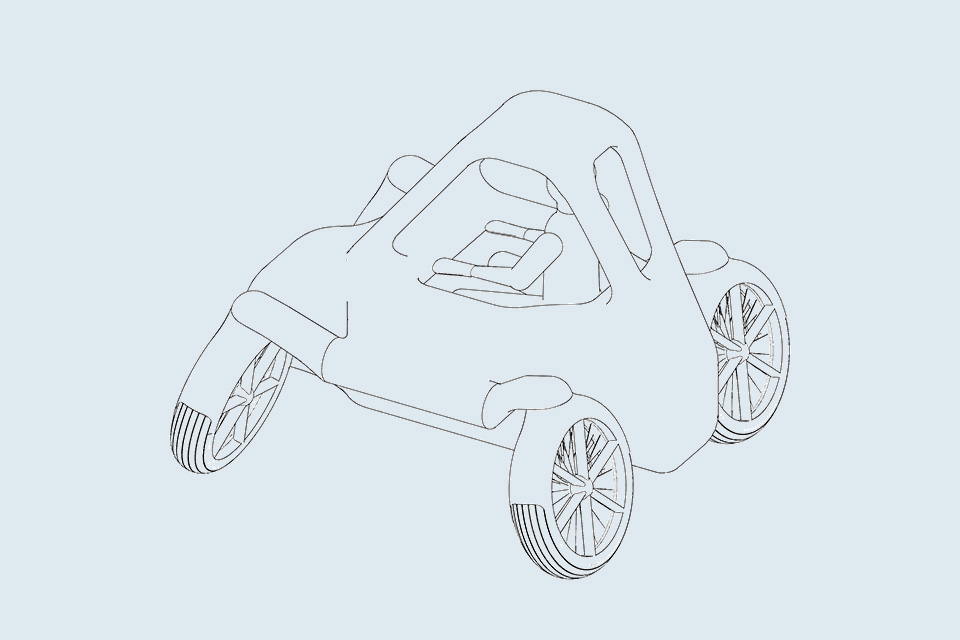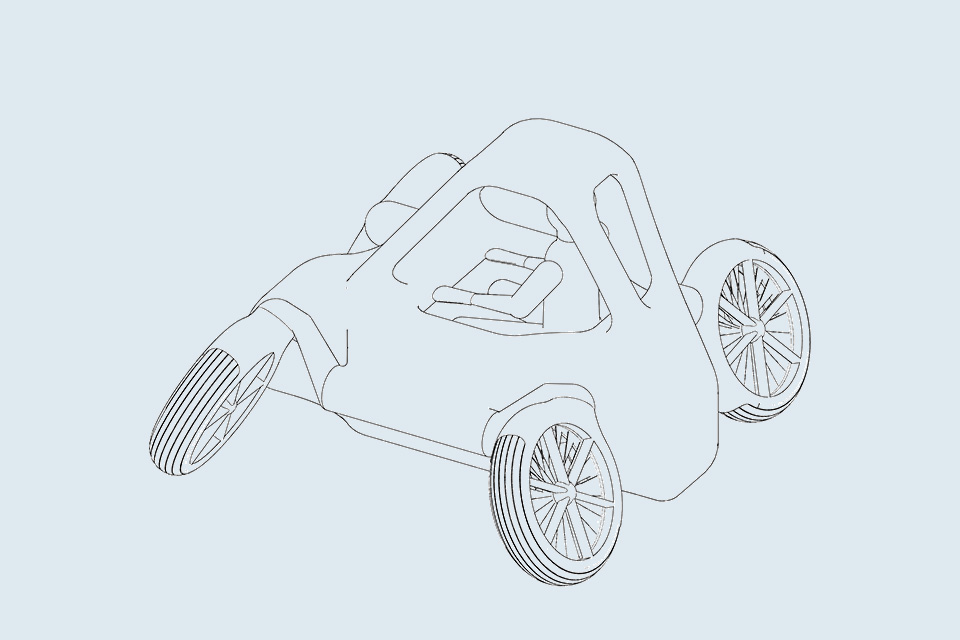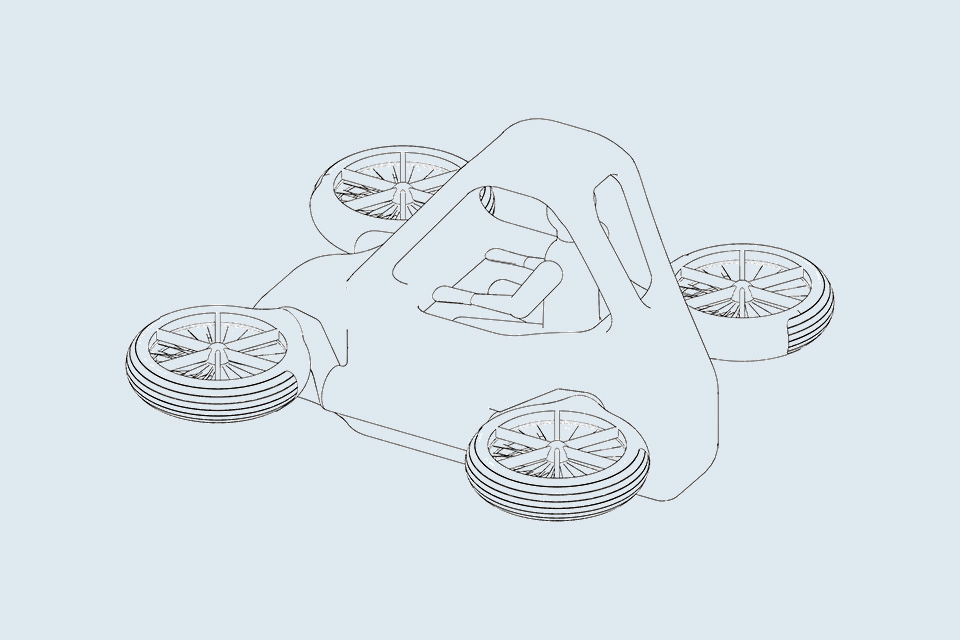Model D
The Pegasos Donkey – our pegasious trailer
Main Purpose
This model is our most simple vehicle and as such it is of course capable of travelling in the air and it is of course also capable of travelling on land, the latter however – as our only vehicle – not by it’s own power. This means for travelling on land our Model D has to be pulled by some other vehicle, e.g. by a car.
So simply spoken this vehicle is a flying trailer, or in our words, a pegasiousThis term denotes the characteristic of having the combined capability of travelling on land and in the air. The ... More trailer and the main purpose of this model is to fulfill the same purpose like every normal trailer, i.e. mainly carrying goods, but with the addition of being also able to carry those goods through the air whenever needed, resp. to lift them up whenever needed.
Our Model D is therefore able to serve as a simple and affordable alternative to helicopters, cranes or other lifting gear, in not all but many situations.
Specific Characteristics
Additionally there is only shown a variant of this model which has 4 propellers on both sides and therefore a corresponding length. However this length may also be e.g. 3 or 5 propellers, depending on the customers needs.
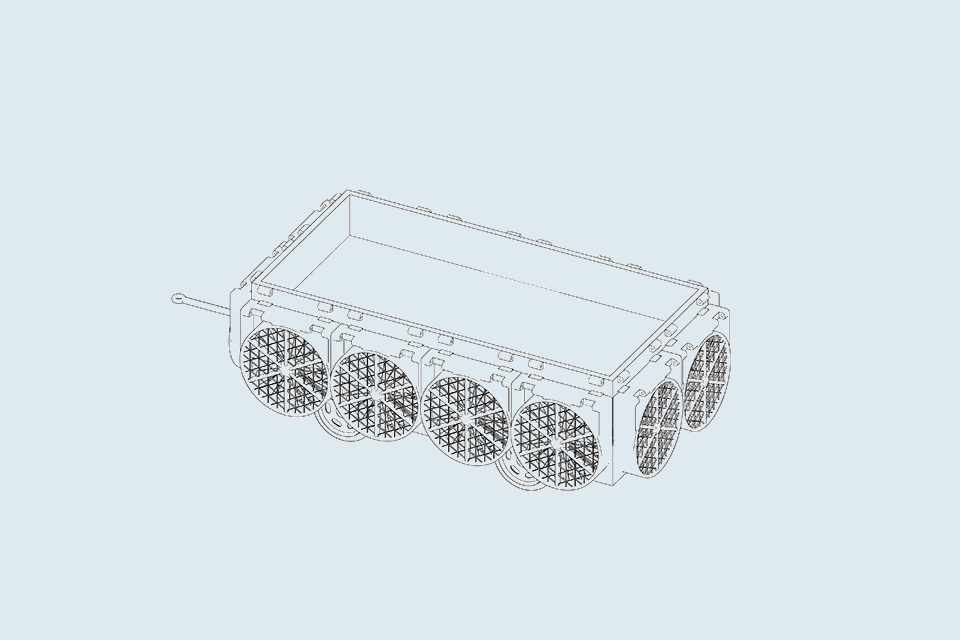
On land
In land mode all propeller protection frames with integrated electrically driven propellers are folded down by means of an integrated pivotal mechanism.
The integrated drawbar is pulled out and the vehicle can therefore be pulled by some other vehicle, e.g. by a car or a truck, with help of an usual trailer coupling.
In this state the vehicle’s width is smaller than an usual street width and hence our Model D is compatible with normal land vehicle infrastructure.
Transition & in the air
In aerial mode, resp. in transition mode (land <-> air), all protective propeller frames with integrated electrically driven propellers are folded up by means of an integrated pivotal mechanism and the drawbar is retracted.
The vehicle can be operated via remote control, but because the operator is therefore free to chose from where he operates the vehicle he can of course also chose to be on the loading space, i.e. even though our Model D is intented to be an unmanned vehicle it can also be operated like a manned vehicle.
In this state the vehicle’s width is wider than an usual street width, however the width is similar to a car with open doors. This means that our Model D is still compatible with normal land vehicle infrastructure in this state and therefore take-off and/or landing in principle is possible almost everywhere.
The relatively heavy power source is located directly under the loading space and together with the folded up propellers this results in a center of gravity of the vehicle which clearly lays below the propeller plane, i.e. this results in a stable flight configuration.
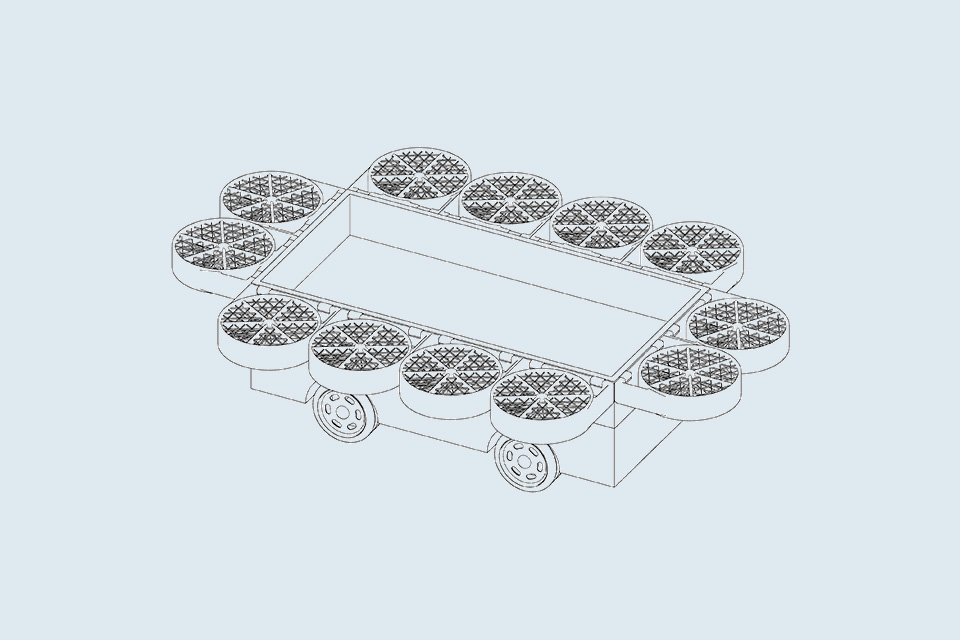
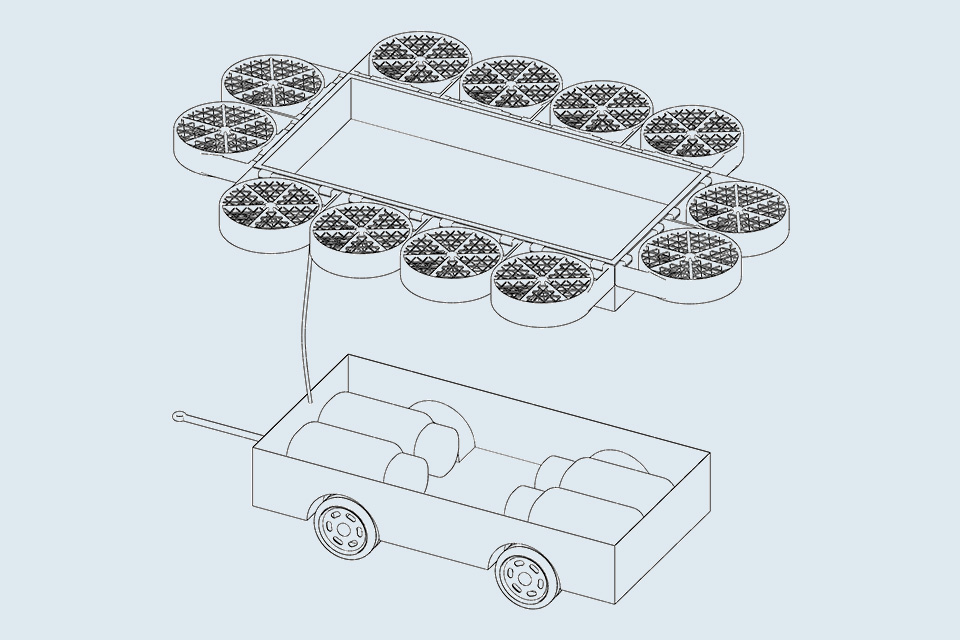
Part on land, part in the air – standard loading space
It is possible to separate our Model D into a lower part and an upper part. The lower part remains on the ground while the upper part hovers above the lower part, to which it is connected by a wire for supplying energy from the power source located in the lower part.
Because the relatively heavy power source doesn’t have to be lifted in this configuration it is possible to lift heavier loads compared to the configuration described in the section above.
This divided mode is especially suitable for lifting loads hanging under the loading space because in this case the center of gravity will again clearly be below the propeller plane, i.e. a stable flight can again be achieved, even though the power source does not contribute to lower the center of gravity in this configuration.
Part on land, part in the air – lowered loading space
Because the usual way of transporting goods is transporting them on the loading space rather than hanging them below the loading space, the upper part of our Model D is also equipped with a mechanism with which it is possible to lower this loading space with respect to the propeller plane.
By help of this mechanism it is therefore possible to also carry heavier and bigger loads on the loading space than in standard configuration but by still maintaining the center of gravity below the propeller plane, i.e. by still maintaining a stable flight.
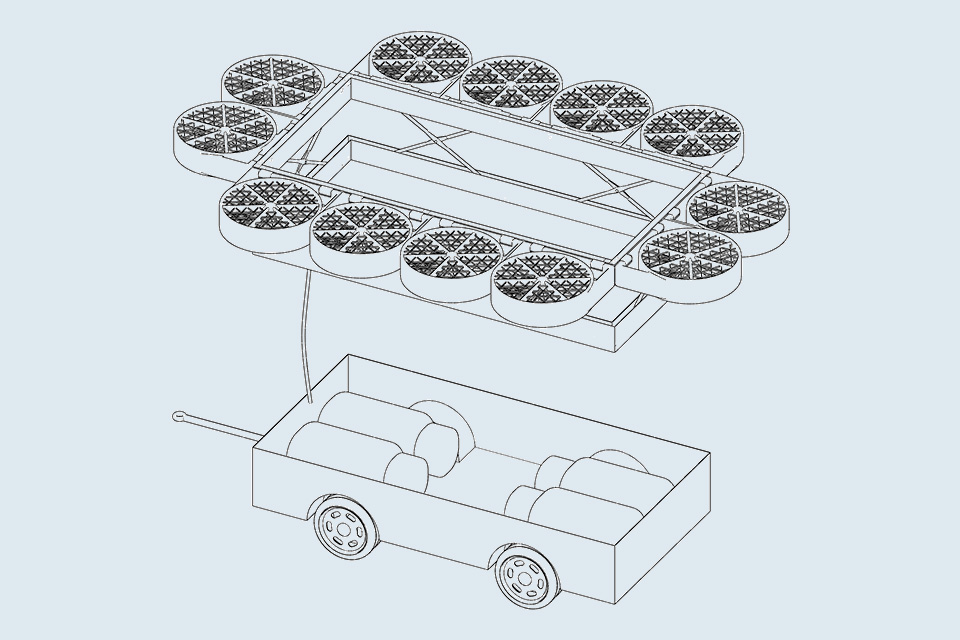
Specific Details
Additionally the details given here are only with respect to the above shown variant with 4 propellers on both sides of the vehicle. Details of other variants will be given at a later point in time.
Loading space
- Yes
Transition between operation modes
- Manual: one person in less than 3 minutes
Power supply
- Internal combustion engine with standard gasoline for land vehicles
Controls
- Remote controlled by joysticks/touchpads
Safety
- Redundant propellers
- Redundant power supply
- Stable flight by design
General
- Max. payload in
- standard mode: ~500 kg
- divided mode: ~1500 kg
Land Mode
- Non self powered
Aerial Mode
- Max. speed: ~70 km/h
- Max. time in the air in
- standard mode: ~60 minutes
- divided mode: ~150 minutes
General
- Weight: ~1500 kg, thereof
- upper part: ~500 kg
- lower part: ~1000 kg
- Fuell capacity: ~200 l
- Max. length/width/framed height of loading space: ~3,2 m / ~1,6 m / ~0,4 m (~0,8 m in lowered mode)
- Min. loading height: ~0,8 m
Land Mode
- Max. length/width/height in
- standard mode: ~3,7 m / ~2,1 m / ~1,2 m
- divided mode (only lower part): ~3,3 m / ~1,7 m / ~0,8 m
length in bodes modes with retracted drawbar
Aerial Mode
- Max. power: ~1200 kW
- Max. length/width/height in
- standard mode: ~5 m / ~3,4 m / ~1,2 m
- divided mode (only upper part): ~5 m / ~3,4 m / ~0,4 m (~0,8 m in lowered mode)
Applications
With it’s specific characteristics and abilities our Model D has many potential applications. A few of them are listed below.
For Individuals Supply of goods in remote areas (mountains, islands, deserts, …), …
For Companies / Institutions
- Sports / Leisure Services: parachute jumping, aerial sightseeing tours, vehicle rental, …
- Transport / Logistics: delivery (in remote areas, e.g. mountains, deserts, islands, …), relocation (e.g. moving and lifting furniture to penthouse), …
- Construction / Assembly: transporting and lifting spare parts (e.g. for wind turbines), …
- Media / Events: behind the camera (aerial shootings, lightning, special effects, …), in front of the camera, advertisements, …
- Expeditions / Explorations: volcanos, glaciers, pollution (rivers, lakes, oceans, …), …
For Authorities / Emergency Services Search and Rescue with access where otherwise not possible (wildfires, fire in skyscrapers, mountain rescue, collapsed buildings, floodings, …), from ski lifts, roller coasters, giant ferries wheels, water (shark attack, strong current, …), …
For Military transport of equipment (substitute for helicopters), overcoming obstacles (gorges, collapsed bridges, water/islands, …), …
Orders/Pre-Orders





